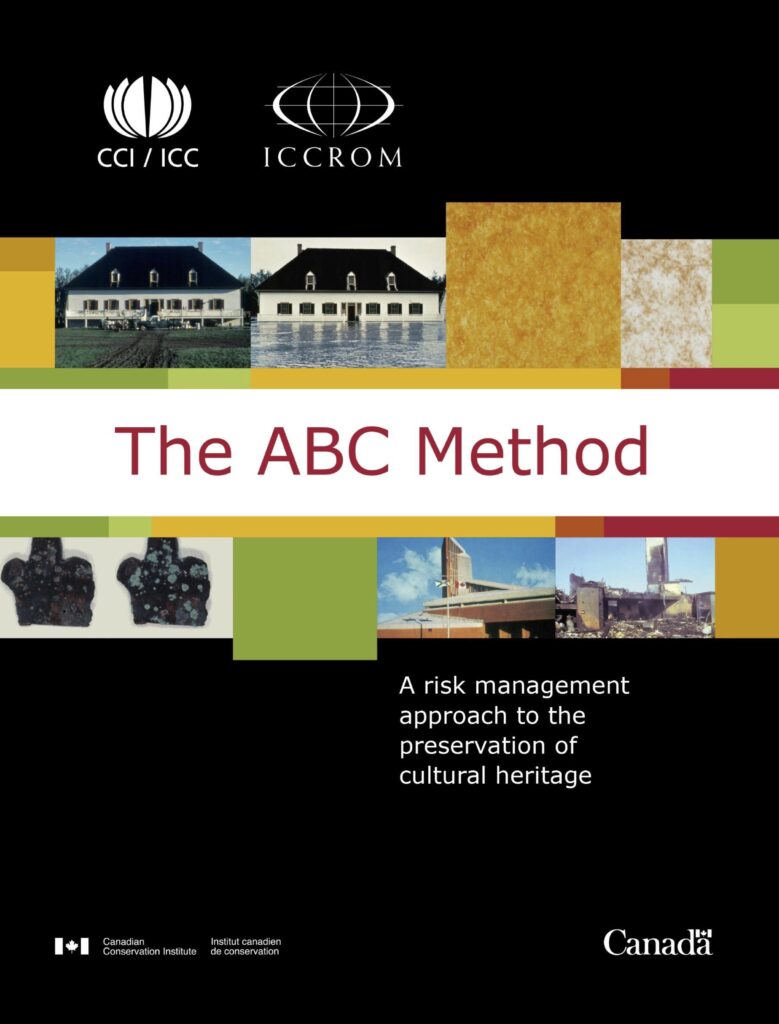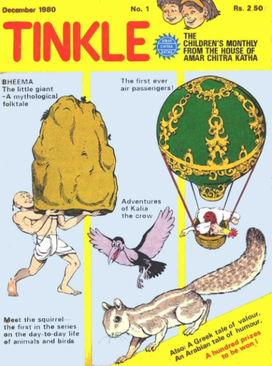The ABC Method to Approach Preservation of Cultural Heritage in Emergencies
If you have ever wondered what to do when facing a pressing and difficult preservation decision, then this method can help.
If you have ever wondered how to balance preservation with sustainability, shrinking resources, user demands, and public accountability, then this method can help.
Finally, if you have ever wondered how to present all this succinctly to decision makers, with transparent priorities, then this method can help
Risks to cultural heritage vary from catastrophic events (such as earthquakes, floods, etc) to gradual processes (such as chemical, physical, or biological degradation). The result is loss of value to the heritage. Sometimes, the risk does not involve any type of material damage to the heritage asset, but rather the loss of information about it, or the inability to access heritage items. So, heritage managers need to understand these risks well so as to make good decisions about protection of the heritage (for future generations) while also providing access for the current generation.
ICCROM (Intergovernamental Organisation devoted to protect Cultural Heritage) and the Canadian Conservation Institute have published the “The ABC Method: a risk management approach to the preservation of cultural heritage”.

The text is presented as a simple user manual for those with risk management and assessment tasks. To briefly summarize its purposes, we can quote the words that the text reports in response to the question Why use it?
“If you have ever wondered what to do when facing a pressing and difficult preservation decision, then this method can help. If you have ever wondered how to balance preservation with sustainability, shrinking resources, user demands, and public accountability, then this method can help. Finally, if you have ever wondered how to present all this succinctly to decision makers, with transparent priorities, then this method can help“
The handbook is based on the five steps of the management cycle (Establish the context, identify risks, analyze risks, evaluate risks, treat risks) and, for each step, three or more tasks are identified, whose complete list
1. Establish the context
- Task 1: Consult with decision makers. Define the scope, goals and criteria.
- Task 2: Collect and understand the relevant information.
- Task 3: Build the value pie.
2. Identify risks
- Task 1: Assemble the appropriate tools and strategies.
- Task 2: Survey the heritage asset and make a photographic record.
- Task 3: Identify specific risks, name them, and write their summary sentences.
3. Analyze risks
- Task 1: Quantify each specific risk.
- Task 2: Split or combine specific risks, as needed.
- Task 3: Review and refine the analyses.
4. Evaluate risks
- Task 1: Compare risks to each other, to criteria, to expectations.
- Task 2: Evaluate the sensitivity of prioritization to changes in the value pie.
- Task 3: Evaluate uncertainty, constraints, opportunities.
5. Treat risks
- Task 1: Identify risk treatment options.
- Task 2: Quantify risk reduction options.
- Task 3: Evaluate risk reduction options.
- Task 4: Plan and implement selected options.
The document is an important study aimed at helping cultural heritage managers and risk assessment professionals in starting the process that limits damages to buildings and artefacts.
The document is freely downloadable from the Canadian Conservation Institute website.
The ABC method applied to five cultural sites in Nigeria
The article “Climate Risk Management in Cultural Heritage for Inclusive Adaptation Actions in Nigeria“, written by Olufemi Adetunji and Cathy Daly and published in Heritage 2024, analyses climate-related risks affecting cultural heritage in Nigeria and proposes inclusive adaptation actions. The global context sees several regions facing increasing climate risks, such as rising temperatures, changes in rainfall patterns, biodiversity loss and extreme weather events. Over the past decade, Nigeria has experienced localised and regional droughts and floods affecting both arable land and cultural heritage, including historic buildings and cultural landscapes.
Previous studies have highlighted the need to assess and manage climate risks to built heritage, identifying vulnerabilities to inform decision-making, prioritisation, resource allocation, adaptation planning and community engagement strategies. Climate risk management involves integrating knowledge about climate-induced events into planning and decision-making for adaptation to potential damage or loss. This requires understanding local climate trends and site-specific characteristics, such as values, characteristics and vulnerabilities.
The impact of climate change on cultural heritage varies across geographical, meteorological and socio-economic factors. Climate change not only creates new threats (such as sea level rise and storm surges) but also increases the intensity of pre-existing non-climate-related threats. In Nigeria, for example, flooding in the southern areas is largely due to river storm surges, inefficient drainage systems and uncontrolled urbanization, while the north is threatened by desertification, drought and sandstorms.
The study methodology adopted a qualitative approach that included multiple case studies, field observations and dialogues with stakeholders, including heritage professionals, researchers, community leaders, governmental and non-governmental organizations. A preliminary review of existing literature was conducted to understand the stories and values of the selected sites. Dialogue with stakeholders was considered essential to improve the sense of responsibility, connection with the environment, coordination of adaptation actions, resilience, knowledge sharing and co-production of common goals. Participants were chosen based on their involvement in decision-making and site conservation, as well as their availability. This approach aimed to integrate both top-down and bottom-up strategies.
For risk analysis, the ABC risk management method (ABCCH), an adapted version of the Cultural Property Risk Analysis Model (CPRAM) developed by the Canadian Conservation Institute (CCI) and ICCROM, was used. ABCCH is a heritage-centred, inclusive and comprehensive decision-making method that engages stakeholders in understanding the context to identify, analyse, assess and address risks. It was chosen for its ease of use and comprehensibility for local communities and non-climate experts, allowing active participation in all stages of the process.
The study applied ABCCH to five cultural sites in Nigeria. These include the National Theatre Complex in Iganmu (CS-01), Christ Church Cathedral in Marina (CS-02), and three sites linked to the Atlantic Slave Trade in Badagry: the first two-story building in Nigeria (CS-03), the Brazilian Barracoon Museum (CS-04), and Gberefu Island (CS-05). These sites exhibit different material characteristics, levels of community involvement in conservation, and forms of ownership. The sites are located in Lagos, an area characterized by a tropical savannah climate with wet and dry seasons. Analyses revealed that changes in precipitation and wind speed/direction cause most of the rapid-onset impacts, such as forest fires, floods, and physical collapse. There remains a strong sense of community connection to the built heritage, but efforts to implement adaptation actions are limited.
In conclusion, climate change poses a significant threat to Nigerian cultural heritage. Addressing these risks requires climate risk management strategies that prioritize inclusive adaptation actions, promoting cooperation between agencies, local communities and international organizations. Integrating traditional knowledge and local practices is essential to anchor adaptation actions in the wisdom of the past, effectively addressing current threats. Engaging local communities and stakeholders is crucial as they have
The study applied ABCCH to five cultural sites in Nigeria. These include the National Theatre Complex in Iganmu (CS-01), Christ Church Cathedral in Marina (CS-02), and three sites related to the Atlantic Slave Trade in Badagry: the first two-story building in Nigeria (CS-03), the Brazilian Barracoon Museum (CS-04), and Gberefu Island (CS-05). These sites exhibit different material characteristics, levels of community involvement in conservation, and forms of ownership. The sites are located in Lagos, an area characterized by a tropical savannah climate with wet and dry seasons. Analyses revealed that changes in precipitation and wind speed/direction cause most of the fast-onset impacts, such as forest fires, floods, and physical collapse. There remains a strong sense of community connection to built heritage, but efforts to implement adaptation actions are limited.
Conclusions
In conclusion, climate change poses a significant threat to Nigerian cultural heritage. Addressing these risks requires climate risk management strategies that prioritize inclusive adaptation actions, promoting cooperation between agencies, local communities and international organizations. Integrating traditional knowledge and local practices is key to anchor adaptation actions in past wisdom, effectively addressing current threats. Engaging local communities and stakeholders is crucial as they have valuable insights to inform adaptation measures. Co-producing adaptation actions with heritage and climate experts is necessary to explore potential approaches, improve resilience and strengthen adaptive capacity. The adopted interdisciplinary approach, including local communities and traditional knowledge, as facilitated by the ABC method, is essential to manage climate risks and contribute to the resilience of local communities, ensuring a sustainable future.





